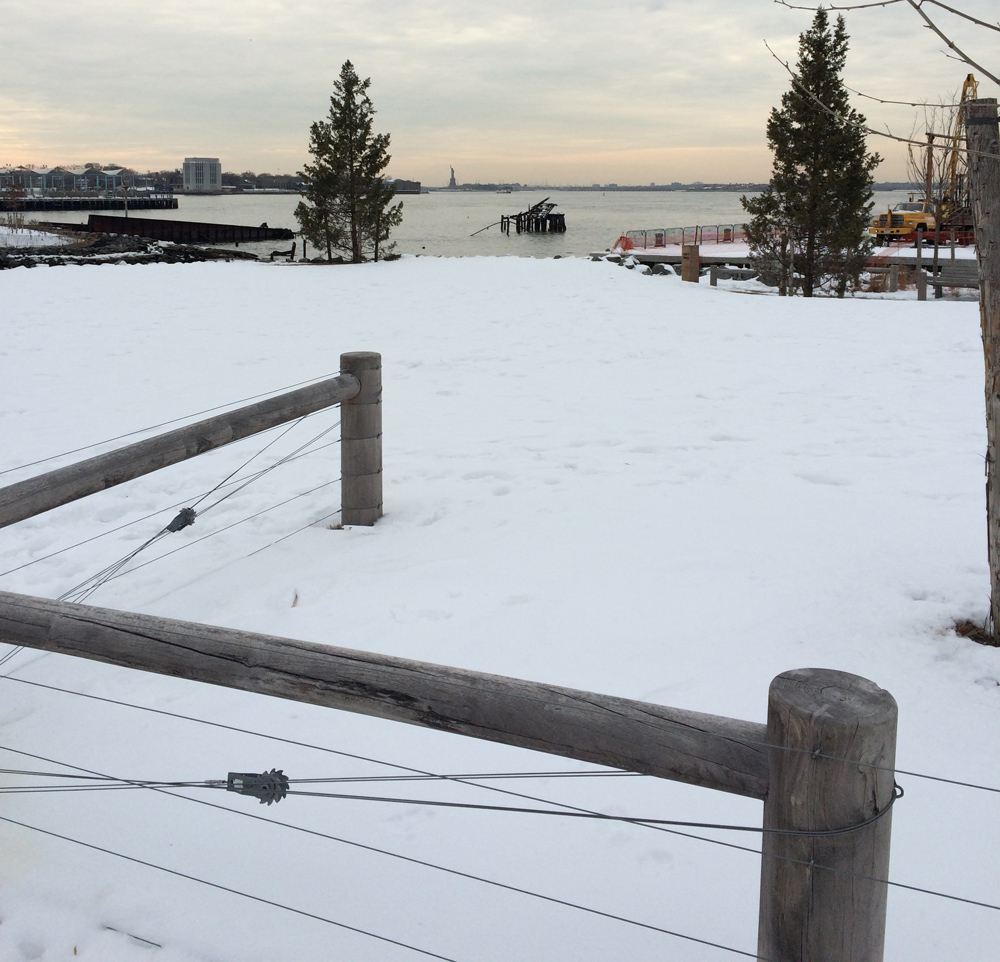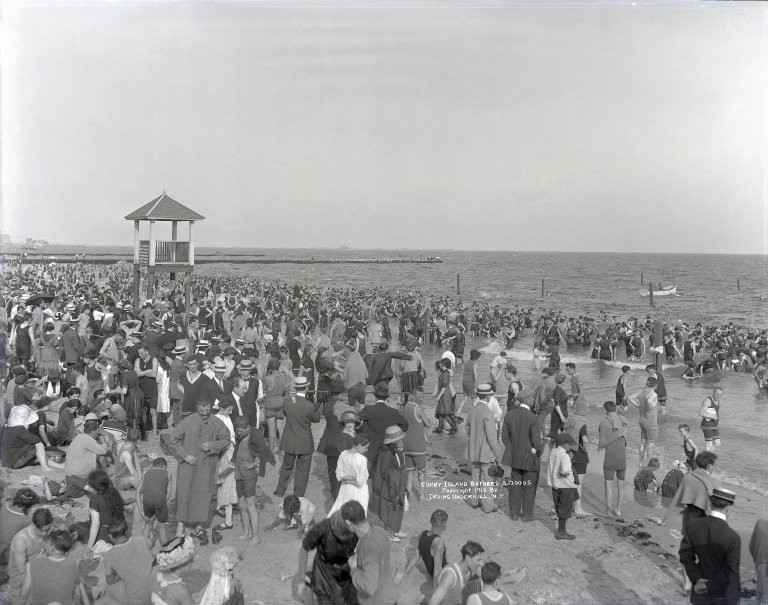If twenty years ago you invited a New Yorker to have a picnic in the industrial shipping yards below the Brooklyn Bridge, between the roaring Brooklyn Queens Expressway and the East River, they might have thought you were nuts. Or maybe wanted to dispose of a body.
But today, one of the most popular parks in New York is on that river bank. Brooklyn Bridge Park, in fact, is not only a destination in the summer months, but a place where New Yorkers of all ages could be found out enjoying the scenery a few weeks ago on a freezing day in February.
There were mothers pushing strollers, two photographers setting up their tripods on the shoreline, a man in his fifties with a tiny Boston terrier, a group of middle school boys kicking chunks of snow, a young bride and groom posing for photos, and even a party of twenty-somethings firing up a hibachi grill on the Picnic Peninsula, all seemingly oblivious to the below-freezing weather.
Along with a group of about fifteen other urban planning enthusiasts, I was there to follow Matt Urbanski, one of the principal designers of the park, as he showed us the clever features that make this park so successful, and that bring a diverse crowd to the waterfront.
Brooklyn Bridge Park offers something for everyone by integrating some of the best ideas of parks in New York and around the world. There is not a pathway, bench, or rock in the park that was placed without thought, but the overall effect is that of spontaneous social interaction and enjoyment.

One small example Urbanski pointed out: a stroll through Central Park rarely goes uninterrupted by small plastic pickets and string, temporarily roping off different patches of plants and grass undergoing maintenance. Brooklyn Bridge Park, however, solves this kind of ongoing temporary problem with sets of short wooden posts inspired by New Zealand sheep fencing. The posts, which are unobtrusive to the landscape, can be turned into fences by simply running rope through metal hooks. This design solution, while simple and understated, considers not just the user experience within the park, but the experience of the park maintenance team as well.
A larger example: if you turn towards the water and Manhattan’s skyline, you are likely to forget the traffic of the Brooklyn-Queens Expressway. As the New York Times pointed out in an early piece on the park proposal, in April of 2000 (ten years before the park’s eventual opening), “Below the Brooklyn-Queens Expressway, in the middle of the park, planners have proposed creating a large open space. Currently, the noise from the elevated highway is deafening on the piers below.” But by using earth berms shaped by computer software, the noise of the expressway is now absorbed and forgotten along the Greenway Terrace on Pier 3. The differing levels of the terrace, inspired by Riverside Park and created by the noise berms and sloping hills, also adds levels to the view on the lawn, enhancing Manhattan’s skyline through its variability as one moves throughout the park.
Besides recycling ideas from New York’s other parks, Brooklyn Bridge Park literally recycles pieces of the city. Granite walkways along the Greenway Terrace are made from pieces of the demolished Roosevelt Island Bridge. Larger cube-like stones salvaged from the Willis Avenue Bridge line the grass, creating impromptu seating, climbing, and playing spaces. As the Brooklyn Bridge Park website notes, “existing structures are recycled and reinvented for today’s park.” Those two words — recycled and reinvented — are hallmarks of the park, which is on the site of decommissioned Port Authority cargo piers.

Brooklyn Bridge Park, in the summer especially, becomes a place where families from outside the borough come to stay for the entire day. In considering the park as a draw for those outside the neighborhood, park planners turned towards old tales of 1920’s Coney Island. The goal is that like Coney Island patrons who paid 5 cents to ride the subway and carried suitcases with their swimsuits, party dresses, and bagged lunch, visitors to the park can make a day of their visit to the waterfront. The idea of a summer day spent at the park is apparent not just in the kayaking program, ice cream stand, and sporting facilities, but in the landscape offering formal and informal seating options, spots that invite guests to stop for a moment or an hour. The Granite Terrace invites guests to sit and view the skyline, while the Picnic Pier invites socialization over food. Rip-rap rocks prevent erosion on the shore, but the park’s planners brought these rocks from the shoreline all the way up to the grass, where it becomes informal seating. The benches around the park were designed specifically to mimic the industrial simplicity of the site.

Brooklyn Bridge Park was created not just by a top team of designers, planners, and private funds, but with the input of New York both in community forums and in the study of Central Park, Riverside Park, and Coney Island. In his talk, Urbanski also cited inspirations for the park outside of New York, including San Francisco’s Crissy Field and Vienna’s Schönbrunn Palace. But the park is a place created mostly from pieces and ideas of New York – and now loved and genuinely adopted by people of the city as well.

Lead image: the park in spring, 2013. (Wikipedia)